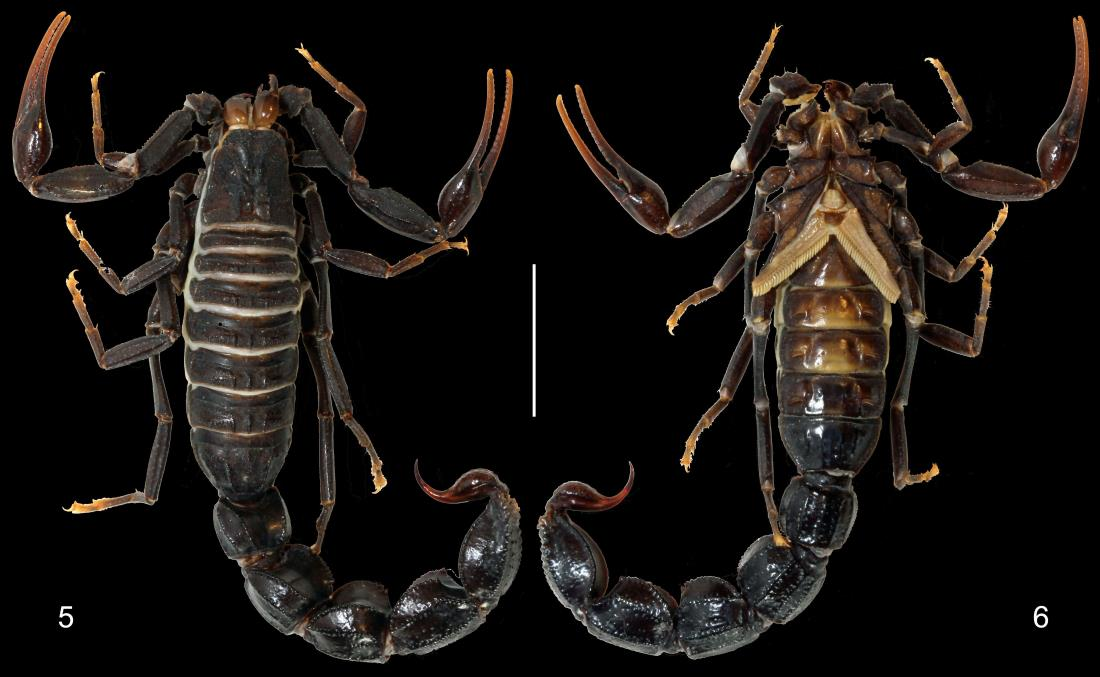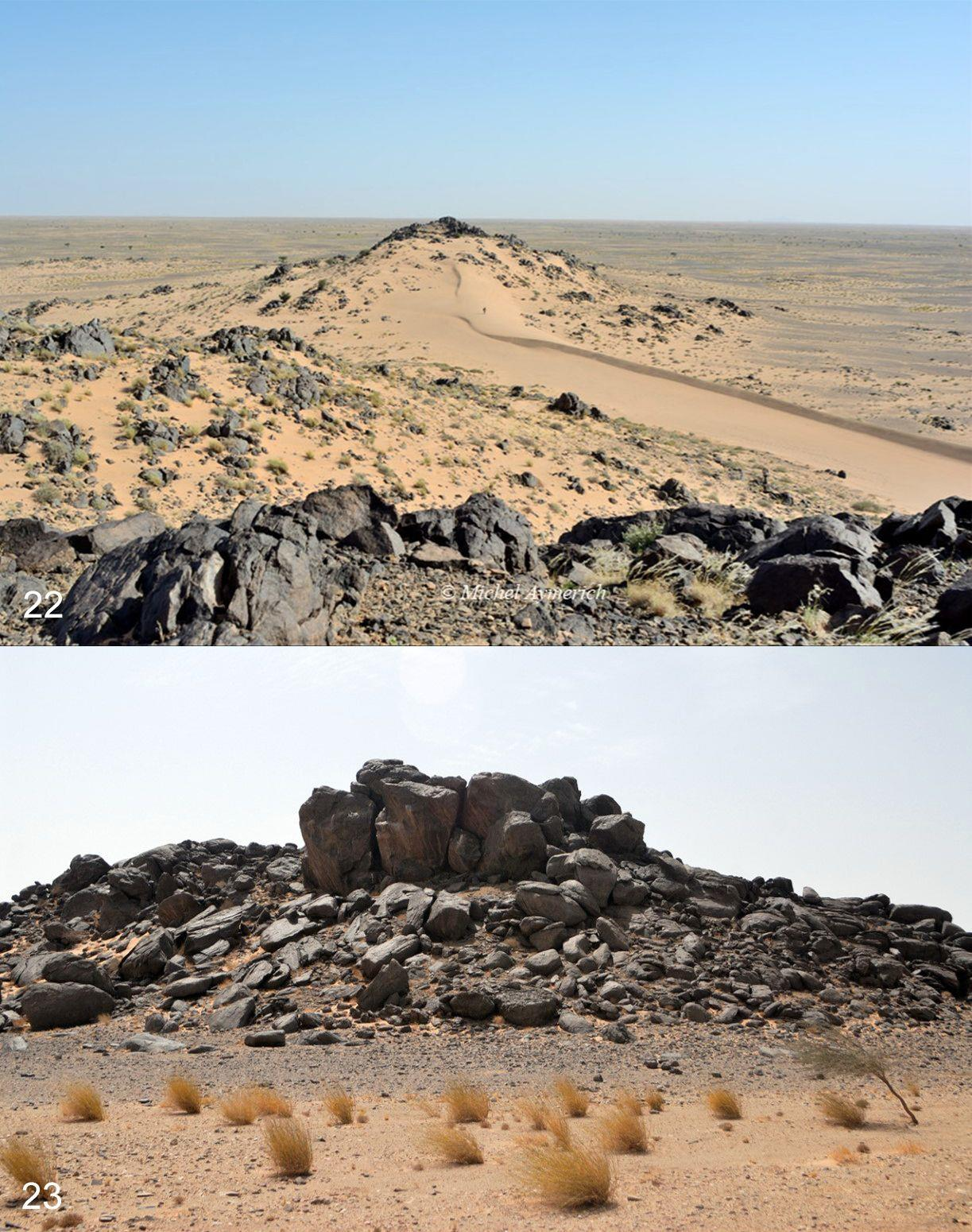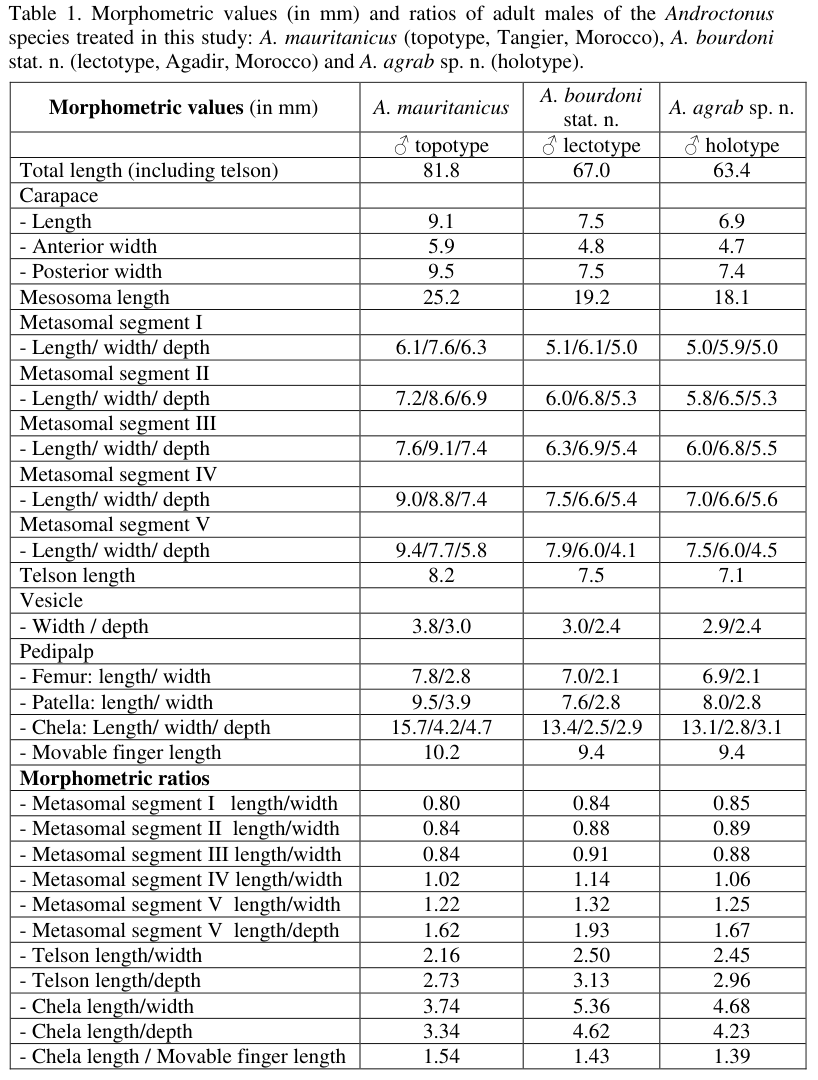Androctonus agrab (Ythier & Lourenço, 2022)
Androctonus agrab [Ythier & Lourenço, 2022*]
Etymology. The specific name is placed in apposition to the generic name and means
scorpion in Ḥassāniyya, the Arabic dialect spoken in Western Sahara, where the new
species was found.
Diagnosis. Scorpion of medium size for the genus, with a total length of 63.4 mm for the
adult male holotype. General colouration brown to blackish-brown; carinae are generally
darker, almost blackish. Carinae and granulations on carapace and tergites moderately
developed. Sternite VII with four moderately to weakly marked carinae. Metasomal
segments I to V moderately enlarged distally; dorsal depression on segments I to IV
moderately to strongly marked. Lateral carinae covering 1/4 to 1/3 of the metasomal
segment II and composed of only 1-3 distal granules on the segment III. Anal arc with
three rounded lobes. Pedipalps with a weakly marked setation on femur, patella and
chela; chela fixed finger with 14-15 rows of granules, movable finger with 13-15 rows of
granules; fixed finger of the male forming a weakly to moderately marked scalloping on
245
the proximal dentate margin. Pectines with 29-29 teeth in male and 22-23 in female.
Trichobothrium db of chela fixed finger distal to est in male, basal to est in female.
Relationships. Androctonus agrab sp. n. is clearly related to A. mauritanicus and A.
bourdoni stat. n., both distributed in Morocco between the Atlantic coast and the western
slopes of Atlas Mountains. These two species can however be distinguished from A.
agrab sp. n. notably by the following main features
- A. mauritanicus: (i) scorpion of large size with a total length of 70-90 mm (smaller size
with 63 mm in A. agrab sp. n.), (ii) pedipalps with a conspicuous setation on femur,
patella and chela (weakly marked in A. agrab sp. n.), (iii) fixed finger of the male
forming a conspicuous scalloping on the proximal dentate margin (weakly to moderately
marked in A. agrab sp. n.), (iv) sternite VII with four well-marked carinae (moderately to
weakly marked in A. agrab sp. n.), (v) male chela fixed finger with trichobothrium db
basal to est (distal in A. agrab sp. n.), (vi) distinct morphometric values, notably with
pedipalp chela manus wider and deeper than in A. agrab sp. n. (see Table 1).
- A. bourdoni stat. n.: (i) lateral carinae covering half to 2/3 of metasomal segment II and
composed of 5-6 granules covering 1/4 to 1/3 of segment III (covering 1/4 to 1/3 of
segment II and composed of only 1-3 distal granules on segment III in A. agrab sp. n.),
(ii) pedipalps with a moderately marked setation on femur, patella and chela (weakly
marked in A. agrab sp. n.), (iii) sternite VII with four well-marked carinae (moderately to
weakly marked in A. agrab sp. n.), (iv) distinct morphometric values, notably with
metasoma less wide and less deep posteriorly and pedipalp chela manus slender than in A.
agrab sp. n. (see Table 1).
REF-
A new species of Androctonus Ehrenberg, 1828 from Western Sahara (Scorpiones: Buthidae)

 Figs. 5-6. Androctonus agrab sp. n., adult ♂ holotype, habitus. 5. dorsal aspect.
Figs. 5-6. Androctonus agrab sp. n., adult ♂ holotype, habitus. 5. dorsal aspect. Figs. 22-23. Natural habitat of Androctonus agrab sp. n., Adrar Sotuf, Western Sahara
Figs. 22-23. Natural habitat of Androctonus agrab sp. n., Adrar Sotuf, Western Sahara
No Comments